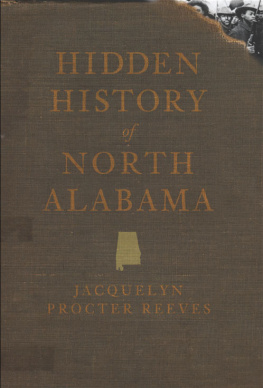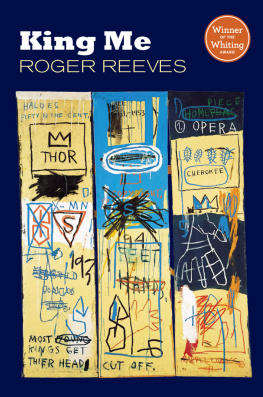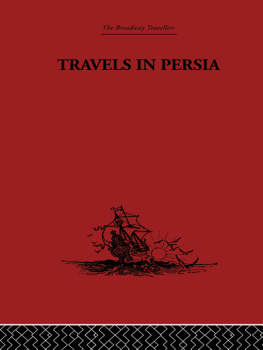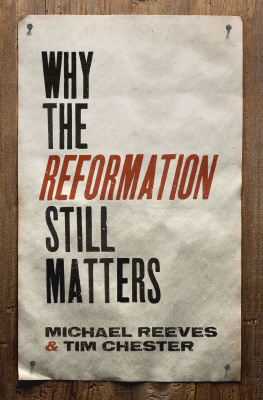Reeves - Europes Debt to Persia
Here you can read online Reeves - Europes Debt to Persia full text of the book (entire story) in english for free. Download pdf and epub, get meaning, cover and reviews about this ebook. year: 2014, publisher: Garnet Publishing (UK) Ltd, genre: History. Description of the work, (preface) as well as reviews are available. Best literature library LitArk.com created for fans of good reading and offers a wide selection of genres:
Romance novel
Science fiction
Adventure
Detective
Science
History
Home and family
Prose
Art
Politics
Computer
Non-fiction
Religion
Business
Children
Humor
Choose a favorite category and find really read worthwhile books. Enjoy immersion in the world of imagination, feel the emotions of the characters or learn something new for yourself, make an fascinating discovery.

Europes Debt to Persia: summary, description and annotation
We offer to read an annotation, description, summary or preface (depends on what the author of the book "Europes Debt to Persia" wrote himself). If you haven't found the necessary information about the book — write in the comments, we will try to find it.
Europes Debt to Persia — read online for free the complete book (whole text) full work
Below is the text of the book, divided by pages. System saving the place of the last page read, allows you to conveniently read the book "Europes Debt to Persia" online for free, without having to search again every time where you left off. Put a bookmark, and you can go to the page where you finished reading at any time.
Font size:
Interval:
Bookmark:
I dedicate this work to my scholar-linguist husband, Nigel Reeves, with whom I share several European languages and literatures and the understanding of Europes intellectual heritage from Persia, Greece and Rome
The Rise of the Achaemenian Empire: King Cyrus the Great, Humanist Persian King and Saviour of Europes Jewish Heritage
(Ecbatana, Susa, Pasargadae, Sardis, Ionia, Babylon, Jerusalem: 558530 bce)
O Ormazd, at thy will the end shall be different. Let those of good power rule over us with acts of good understanding. Those wisemen of the lands. Those who follow knowledge of thy teaching and act with good purpose.
(Verses from Zoroastres Sacred Hymns, The Gathas , Yasna 48, 1400 bce )
The Birth of the First Persian World Empire (558530 bce)
I am Cyrus, King of the World, the Great King, legitimate King, King of Babylon, King of Sumer and Akkad, King of the four rims of the Earth, Son of Cambyses [590558 bce ], the Great King, King of Anshan [Fars, Persis in ancient Greek], the grandson of Cyrus [620590 bce ], the Great King, King of Anshan, the great-grandson of Teispes [650620 bce ], the Great King, King of Anshan. I represent a long bloodline of kingship, which Bel [Marduk, Babylons city-god] and Nabu [Marduks son] sincerely cherish. When I entered Babylon people were jubilant and rejoiced. Their great god, Marduk, had graciously given his blessing to me, Cyrus, the King who reveres him, and to my son Cambyses, and to all my troops. We entered Babylon with little resistance. Nabonidus [Babylons ruler] had turned this city into abomination. Daily, he used to do evil against its inhabitants. To put an end to peoples suffering, great god Marduk looked through all the countries, searching for a good ruler, willing to lead his people. Then, he pronounced the name of Cyrus, King of Anshan, to be the right ruler of the entire world. I, Cyrus, strive for peace in Babylon and in all sacred cities under my rule. I did not allow anyone to destroy cities and molest or torment in any way their inhabitants, whether it be Babylon, Sumer or Akkad. In all those lands I abolished slavery and forced labour. From Nineveh, Assur and Susa to the region of Gutium, I rebuilt sanctuaries which had been destroyed by former rulers and lay in ruins. I re-established the sacred images of the past worshipped by people in those sanctuaries. And as for people who had been removed from their homes by those rulers, I gathered them and returned them to their own habitations and their own temples. (Excerpt from the Cyrus Cylinder, written on clay in cuneiform script in the Babylonian language, discovered in 1879 in Hurmuzd Rassam excavations of Babylon, now in the British Museum NBC 2504)
The above text is the English translation of the cuneiform Babylonian language version of the famous clay tablet known as the Cyrus Cylinder. It has miraculously survived some two thousand six hundred years. Its home is now the British Museum in London. The cylindrical form is typical of royal inscriptions of the Neo-Babylonian Period and the text shows that the Cylinder was written to be buried in the foundations of the city wall of Babylon. It is believed to be the first Declaration of Human Rights that the world has known. The declaration was made by King Cyrus II or King Cyrus the Great, founder of the first world empire, known to the Ancient Greeks and to Antiquity as the Persian or the Achaemenian Empire . King Cyrus established this empire over three decades; previously, there had been nothing like it in the history of the known world.
King Cyruss mother tongue was Old Persian, the language in which Persias ancient monotheist thinker Zoroastre in c. 1400 bce had recorded his Sacred Hymns, The Gathas , conveyed to him by his unique God, Ormazd, the Creator of the Universe. Having been brought to southern regions of Iran by King Cyruss ancestors, the Persians and the Medes, who had initially inhabited Caucasia around 2000 bce, Old Persian remained the Achaemenian court language. Several dialects had already developed from that ancient language, dialects which were spoken by local populations from northern to southern Persia, or Fars, Persis in ancient Greek, a name given to the country by King Cyruss great-grandfather, King Teispes. King Cyrus referred to the province of Fars, the heart of his empire, by its former Elamite name, Anshan, in the Cyrus Cylinder. Other languages of non-Iranian origin, such as Aramaic, Babylonian and Akkadian This was an unprecedented act of tolerance, leniency and humility for a conqueror in Antiquity to observe.
It is to The Royal Persian Gold Tablets, the earliest of which are Arya-Ramna (c. 640 bce) , Arsham (c. 559 bce) and The Cyrus Tablets, found in Ecbatana and the plains of Dasht Morghab or Marvdasht in southern Persia, that we owe our knowledge of King Cyrus and his forefathers, the Achaemenian dynasty. The tablets are also testimony to their religion, the religion of Zoroastre, and to their God, Ahura Mazda, also known as Ormazd. The texts tell us that the kingdom of the Achaemenians prospered by the favour of this Supreme God of Light and Wisdom. Other important historical sources are The Persepolis Foundation Clay Tablets, The Babylonian Clay Tablets, such as The Nabonidus Chronicle , The Cyrus Cylinder, and The Persian Verse-Account . These sources throw light on the organization and aims of the Achaemenian Empire, its infrastructure, its economy, its functionaries, its tax system, everyday life in its multiple provinces or satrapies , and the way in which King Cyrus and his successor Persian kings, queens, princes and princesses lived and conducted themselves.
The Persepolis, Ecbatana, Susa, Naghsh Rustam and Bistun high relief stone inscriptions in cuneiform and the depictions of kings and their courts are equally important for assessing what legacy King Cyrus left behind for his successors to emulate. Of illuminating historical value, especially with regard to the history of the repatriation of the Jews of Babylon by King Cyrus, the rebuilding of the city of Jerusalem and the Jewish sacred Temple and the restitution of the Jewish Bible, sponsored by King Cyrus and his successors, King Darius I and King Artaxerxes I, are the surviving remnants of The Royal Persian Archives. They are recorded on leather and papyrus. By good fortune they escaped the ravages of Alexander (356323 bce) , the King of Macedon, upon his conquest of Persia in 330 bce. Not only did the Royal Persian Archives survive but, ironically, Alexanders arson attack on the royal Apadana palaces in Persepolis helped to preserve the Persepolis Foundation Clay Tablets, for the heat of the fire intensified the inscriptions. These provide us with a wealth of knowledge about the size and efficacy of the imperial administration and its achievements. However, during Alexanders ravages, lootings and arson, important religious, scientific and literary manuscripts and parchments of the Royal Persian Archives known as Khazaen [Treasury] at Persepolis and Estakhr, the centre for the Zoroastrian High Magi Order were destroyed. Persepolis, the nucleus of the Persian Empire, a splendid royal seat, built on a grand scale by King Cyruss successor, King Darius I (522486 bce) and his son King Xerxes I (486465 bce), was burnt to the ground. But the blaze of the fire through which Alexander had hoped to obliterate the memory of the great Persian Empire an empire which in its west wing had stretched to the borders of his homeland, Macedonia, and which he had loathed and envied intensified the royal inscriptions on the clay tablets. It led to their being more clearly incised and made them virtually indestructible, and hence easier for modern historians and linguists to decipher them.
The Babylonian clay tablets tell us that the ancient city of Babylon on the River Euphrates fell into King Cyrus the Greats hands in 539 bce. King Cyrus had already united the Iranian kingdoms of Persia and Media and had annexed Assyria, Phoenicia and Lydia in the Mediterranean region to a new imperial model which he was creating with provincial governorships known as satrapies. King Cyrus instructed these governors, as Xenophon has recorded in Cyropaedia , in accordance with his own ethical principles: discipline; devotion to their duties; loyalty and integrity towards their country Persia; respect for the local populations and the cultivation and patronage of their customs, religions, and languages. King Cyrus had met little resistance in Lydia. The Lydian king, Croesus, who had invaded Media, surrendered to King Cyrus after a military struggle and negotiations. King Cyrus was magnanimous in victory, pardoned Croesus and valued his advice. Indeed, Croesus became the Great Kings advisor for that province. Babylon surrendered to King Cyrus without even a fight. King Cyruss success in military conquest was, as the tablets make evident, largely the result of his sober diplomatic techniques as a negotiator and his well-thought-out strategic planning. His smooth conquest of Babylon can therefore be regarded as a guideline to his other conquests, which had already taken him westward to Assyria, Lydia, Phoenicia, Armenia and Greece. In Babylon, thanks to the assistance of influential Babylonian aristocrats and high-ranking officials, who had allied themselves with King Cyrus against their own King Nabonidus (555539 bce) , with whom they were deeply dissatisfied, King Cyrus and his armies were granted easy entry into the city. As for Nebuchadnezzar, his notoriety had not ceased with the destruction of Susa. He had captured and destroyed the city of Jerusalem and had desecrated its Temple, deporting the Jews to Babylon and holding them in captivity and enslavement for some sixty years until King Cyrus liberated them and repatriated them to their home city, Jerusalem, upon his conquest of Babylon in 539 bce, sponsoring them to rebuild their Temple. The historian Seton Lloyd notes:
Font size:
Interval:
Bookmark:
Similar books «Europes Debt to Persia»
Look at similar books to Europes Debt to Persia. We have selected literature similar in name and meaning in the hope of providing readers with more options to find new, interesting, not yet read works.
Discussion, reviews of the book Europes Debt to Persia and just readers' own opinions. Leave your comments, write what you think about the work, its meaning or the main characters. Specify what exactly you liked and what you didn't like, and why you think so.


















